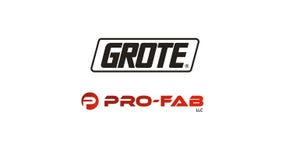How do you respond when, not if, the spray dried material changes?
January 12, 2021

Charles W. Lipp, principal consultant, Lake Innovation LLC
Spray drying is a unique process in the production of dry powder from a feed slurry or material. How do you respond when, not if, the spray dried material changes? The easy-to-handle material now causes problems—either it is not flowing as the equipment was designed or the bag no longer holds the material because the bulk density has changed. The spray nozzle is always the primary suspect, but it may not be the culprit. Could the cause be a change in the feed material?
At the heart of the process in the large drying vessel is a small region near the atomizing device where the spray and hot dryer air make contact and mix. What happens in this region controls the powder quality. Regardless of the type of atomizer—rotary, pressure nozzle, or air atomized nozzle—the proper spray performance is critical. One critical factor that every dryer operator knows is the drop size produced by the atomizer. The second factor is the dispersion into the hot gas of the dryer inlet nozzle airflow. The interaction of the spray with the hot air from the air nozzle is the critical zone of high turbulence where the trajectories of the drops are impacted.
I will focus on pressure nozzles (AKA single-fluid nozzles), although the same factors apply to the other atomizing nozzle types. The high velocity of the liquid or slurry streams essential for good atomization results in a significant wear rate in the internal components of the nozzle. Abrasive wear is the most common aspect. However, cavitation and corrosion may contribute to wear. For many nozzles, wear components are essential to lengthen the time between replacements.
Why is the nozzle replacement a critical performance issue?
We often refer to the drop size, which implies a single diameter, yet we know there is a range of drop sizes. The average drop size used today is the DV50, or volume median drop size, but some may use Sauter mean drop size, SMD. The drop size distribution is critical because the fine drops evaporate quickly (~0.01 seconds) and the largest drops slowly (~5 seconds).
Worn nozzles of all types produce a slightly larger average drop size, requiring a longer drying time. A small change in average drop size increases the number of larger droplets. The relationship is nonlinear, so what might be a small change will impact the moisture content of the product. The high moisture may have resulted in operating at a slightly lower rate of powder production.
But let’s not forget that the wet streaks caused by a worn nozzle result in dryer vessel wall deposit, which flakes off and causes solids handling problems downstream as well as oversized material screener loss.
What is your practice for pressure nozzle replacement?
Facilities know their product’s unique abrasive nature and therefore change the nozzles regularly—weekly or monthly-based on history. Nozzle replacement methodology is reasonably straightforward for a dryer with a single pressure nozzle, but many dryers have several nozzles, perhaps in the range of 4 to 20. Knowing when to change each of these nozzles is a bit more complicated.
In the context of the Six Sigma process, Jack Welch has been quoted as saying, “Variability is evil.” Reducing the variability in operation caused by an excessively worn nozzle may pay big dividends. Robust operating discipline on nozzle replacement to prevent worn nozzles on the established schedule seems a worthy objective in reducing product powder variability. Understanding the basis for the nozzle replacement schedule is critical because the maintenance budget is slightly impacted by the cost of nozzle replacement parts in production amount and product quality.
What if you did a production experiment for six months and reduced replacement time by 25%? Having a direct comparison will provide factual information to determine the better replacement schedule. Is there a difference in particle size? Does the production of oversized particles increase? Is there a change in dryer wall deposits?
Check the replacement frequency of the atomizing nozzles to ensure that attempting to save money on replacement parts is not costing you a bundle on the production of your product.
Charles W. Lipp is principal consultant, Lake Innovation LLC (Lake Junaluska, NC). His work focuses on atomization, sprays, complex fluid mechanics, and innovation. He authored Practical Spray Technology: Fundaments and Practice and, more recently, Spray Drying Essentials. Both are available from Amazon. Before founding Lake Innovation LLC, Lipp worked with sprays and process technology innovations at Dow Chemical for 20 years. For more information, call 979-266-9419 ext. 101 or visit www.lakeinnovtion.com.
You May Also Like


